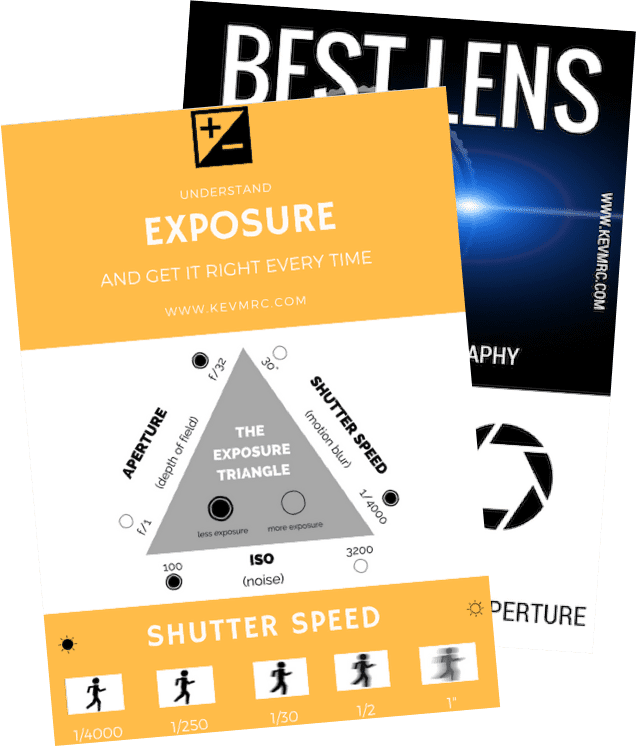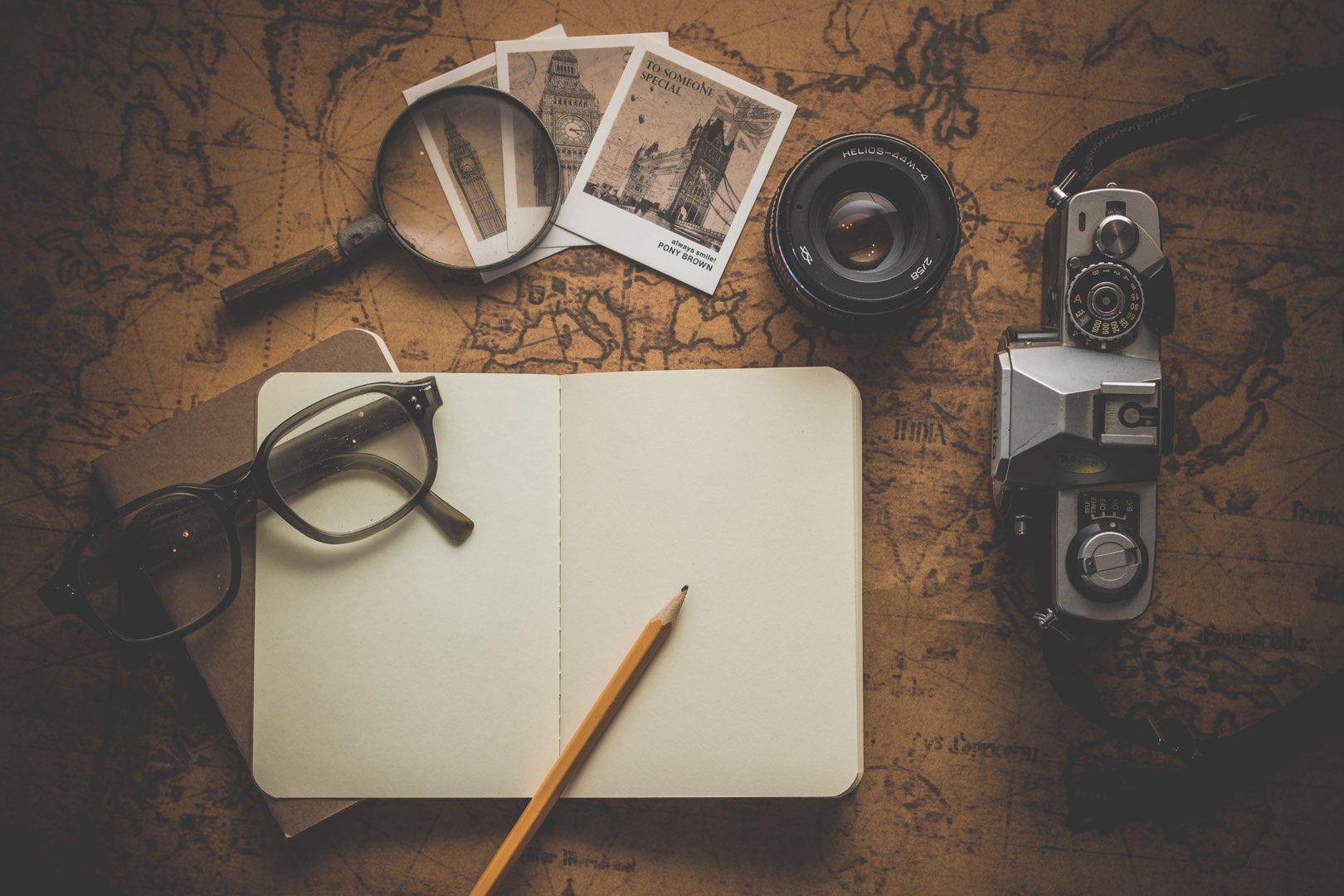Photography Basics – The Ultimate Guide
Everyone knows that in order to master anything, you must first learn the basics. Well, it goes the same way for photography: to master it, you need to learn the photography basics.
Photography basics are the first things you need to get familiar with: it’s several different skills. You need to understand your camera, exposure, composition, and focus.
Bottom line? If you want to take awesome photos, learning the basics is a must.
I’m going to show you everything you need to create awesome visuals. Let’s get started!
Don’t have time to read the whole guide right now?
No worries! I’ll just send you a PDF copy so you can read it whenever you want. Just enter your email address below (it takes 5 seconds).

Get my FREE Photo Resources
Need help perfecting your photos? I've created step-by-step guides and compiled all my tips in a folder that I'm giving you free access to, to help you become a better photographer. Get it straight to your inbox now!
No spam, unsubscribe anytime.TABLE OF CONTENTS
- Chapter 1 – How to get the Exposure Right Every Single Time
- Chapter 2 – Understand Aperture and Nail the Depth Of Field
- Chapter 3 – How to Control Motion Blur with Shutter Speed
- Chapter 4 – ISO & Noise
- Chapter 5 – How Understanding Camera Modes Will Dramatically Improve Your Photography
- Chapter 6 – Never Get a Blurry Photo Again
- Chapter 7 – How Good Composition Can Help You Take Better Pictures
- Chapter 8 – How to Take Stunning Pictures by Playing with Light
- Chapter 9 – Get Exactly the Result You Want by Picking the Right Focal Length
- Chapter 10 – Advanced Resources
- Now It’s Time to Shoot!
Chapter 1 – How to get the Exposure Right Every Single Time
The very basic of photography comes down to light: is your photo too dark? Too bright? Or is it just right, perfectly exposed? The latter is what you should strive for; to achieve that, it’s a combination of 3 different things: aperture, shutter speed, and ISO.
This chapter covers exactly what you need for perfect exposure.
Aperture, shutter speed and ISO
Chapter 2 – Understand Aperture and Nail the Depth Of Field
As you’ve read in the previous chapter of photography basics, aperture is one of the 3 components of exposure. You can adjust how much light you let in your camera, and thus control exposure.
But it also has an effect on your photos: it controls depth of field.
What is depth of field? And how to control it?
Ultimate Guide to Depth of Field
Chapter 3 – How to Control Motion Blur with Shutter Speed
Similar to aperture, shutter speed controls exposure and has an effect on pictures.
By changing the shutter speed, you can create or suppress motion blur; this will allow you to add a silky effect to water, create light trails, or freeze a bird mid-air.
Here are 4 articles explaining just that:
Motion Shutter Speed, Freeze & Blur
National Geographic guide to motion blur
Tutorial on camera shutter speed
Chapter 4 – ISO & Noise
ISO is the last of the 3 settings that affects exposure, with aperture and shutter speed. And you guessed it, it also controls something else: noise.
Using high ISO will allow you to shoot in low-light conditions, but the counterpart is that you’ll have noise on your photo.
This chapter illustrates what noise is and how to use it.
What is depth of field? And how to control it?
Chapter 5 – How Understanding Camera Modes Will Dramatically Improve Your Photography
Now that you know exactly what exposure is, how to control it using aperture, shutter speed, and ISO, and deciding on your depth of field, motion blur and noise, you’re ready to take your camera out of auto mode.
Understanding the different camera modes is an important step in your journey to achieving total control of your camera.
Understanding camera shooting modes
When to use aperture priority mode
Chapter 6 – Never Get a Blurry Photo Again
On this chapter of Photography Basics, we’ll deal with one issue a lot of photographers seem to run into: having blurry photos.
This can come from a variety of reasons: camera shake, using a too slow shutter speed, using the wrong aperture or not nailing the focus point.
Learn how to get sharp pictures every single time with these 4 articles.
Achieving better focus & sharpness in photos
Chapter 7 – How Good Composition Can Help You Take Better Pictures
Alright, that was a lot of information about your camera settings! “But where is the artistic side?”, you ask.
Well, here it is: what makes a “good” photo is rarely a single thing. Rather, it’s several small things all working together in harmony to create some kind of emotion in the viewer.
To take interesting photos, you can use the well-know rules of composition; they’re sure to boost your photography game!
Remember: “Learn the rules like a pro, so you can break them like an artist”- Pablo Picasso.
What is composition in photography
10 reasons why you need to learn composition
Chapter 8 – How to Take Stunning Pictures by Playing with Light
Put 10 photographers in the same place, with the same camera and lens, and you’ll have 10 different pictures.
But they’ll all agree on one thing: light is one of the most important thing in photography.
In this chapter you’ll learn to recognize good light, and how to use the natural light for inspiring photos
National Geographic guide on available light
How to read light in photography
Chapter 9 – Get Exactly the Result You Want by Picking the Right Focal Length
Once you’ve successfully mastered all of the above, and used your first lens over and over, you’ll probably be wanting to buy a new lens.
But what are the differences between a 35mm lens, and a 50mm? Between a prime lens and a zoom lens? What effect does it have on your photos?
Read through to get the answer to all of these questions, and more:
How to use focal length to enhance photos
Technical rule for shutter speed based on focal length
Chapter 10 – Advanced Resources
Read all of the chapters? Or already familiar with all of the photography basics?
Well you’re in luck, because in this chapter I’ve included different advanced resources you can use to take your photography one step further, by learning about white balance, understanding metering, and using back button focus.
Now It’s Time to Shoot!
I hope you enjoyed my ultimate guide to digital photography basics. What did you think of this guide?
Or maybe after all of this you still have a question?
In any case, let me know by leaving a quick reply in the comment section right now!

